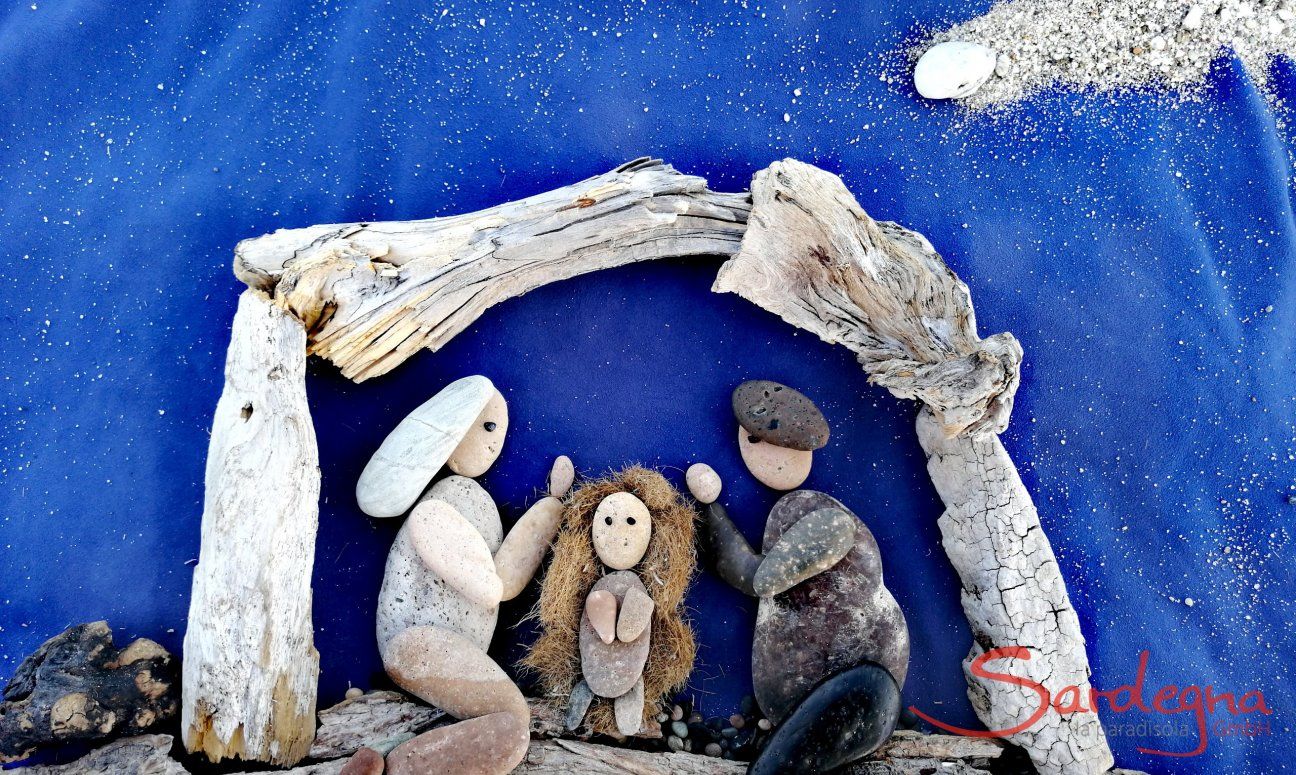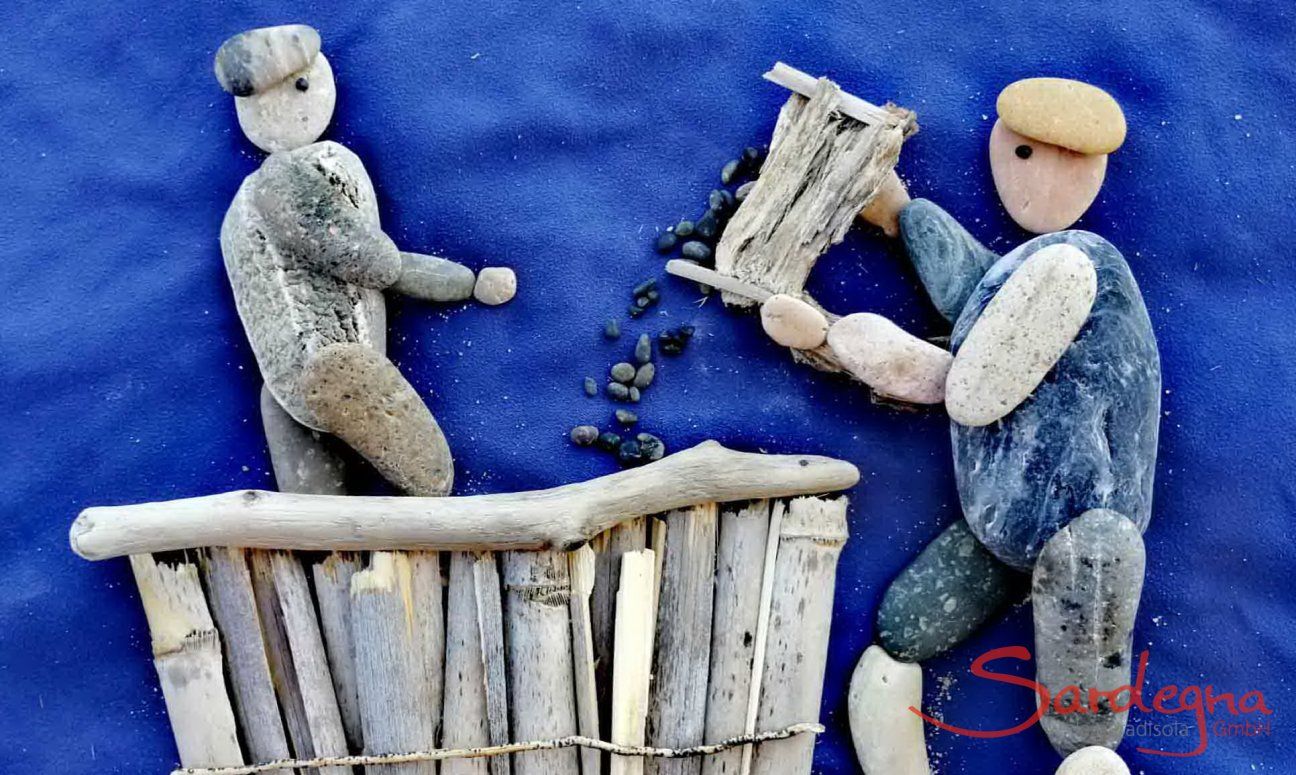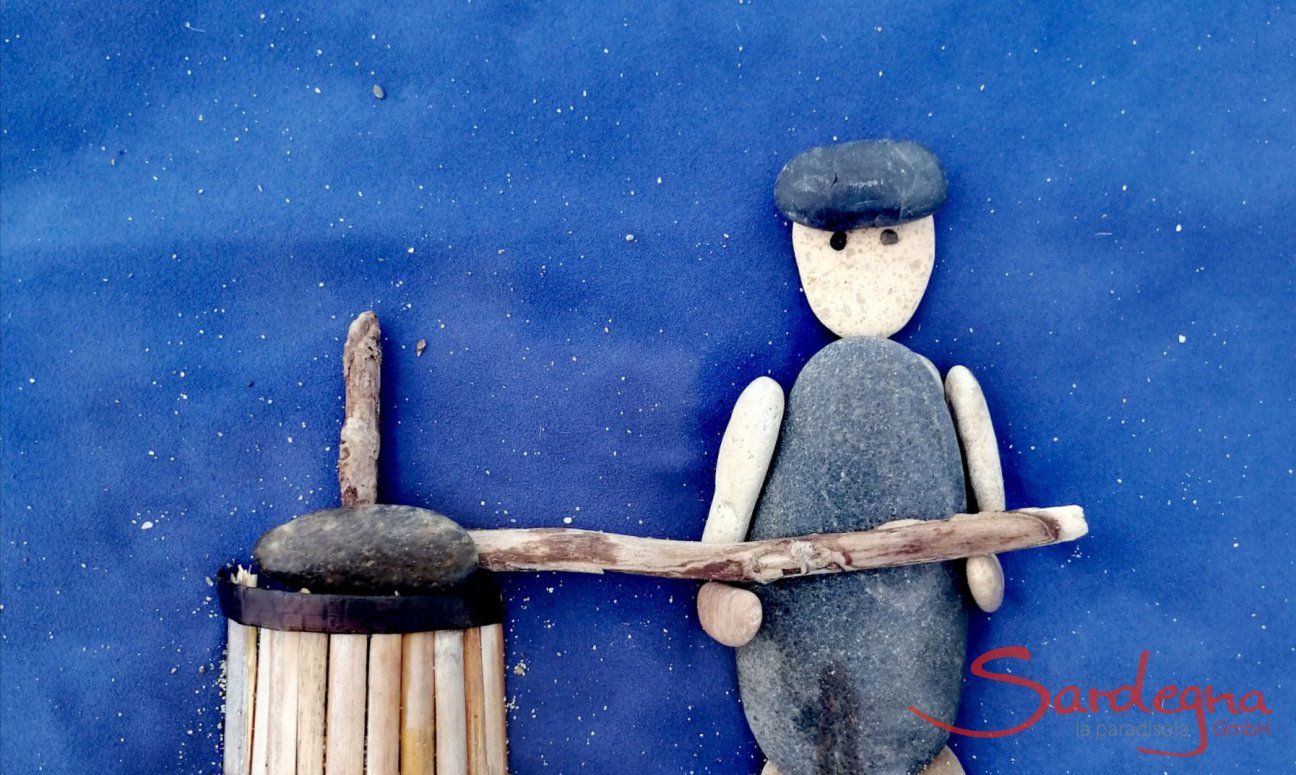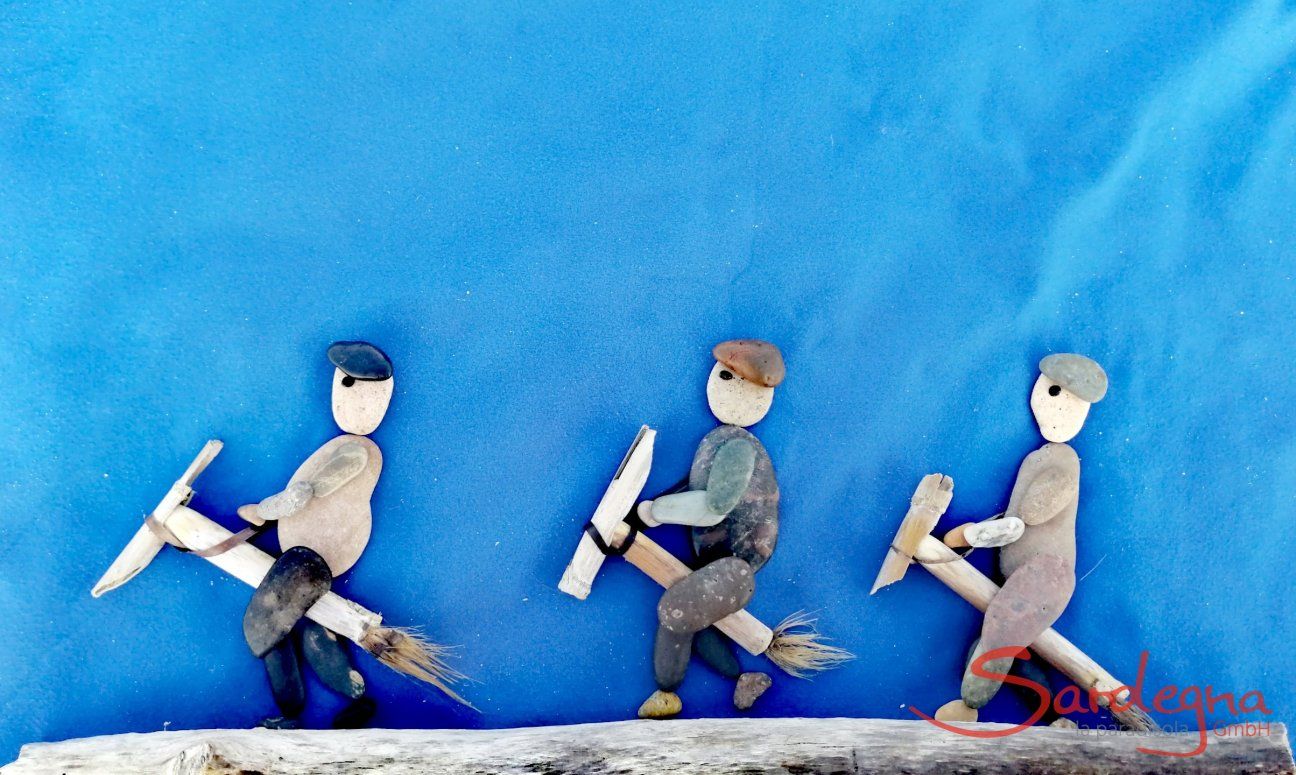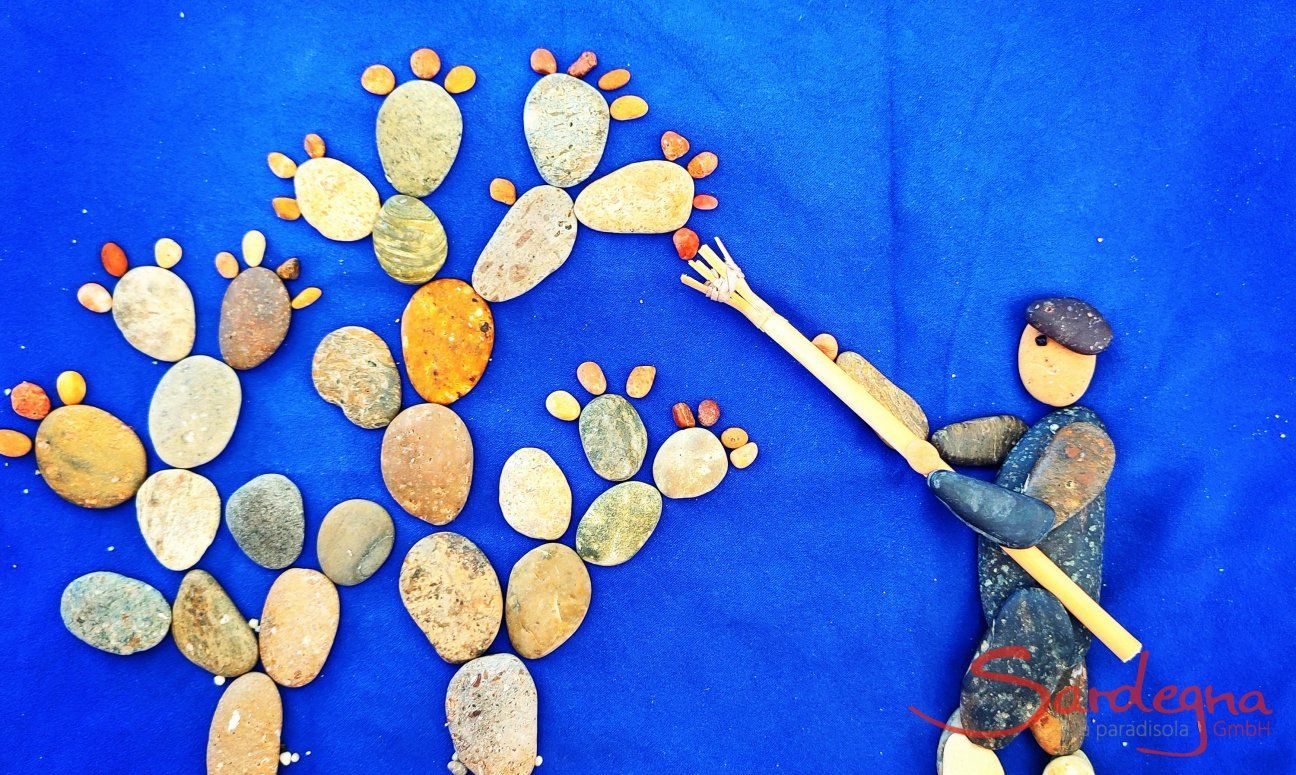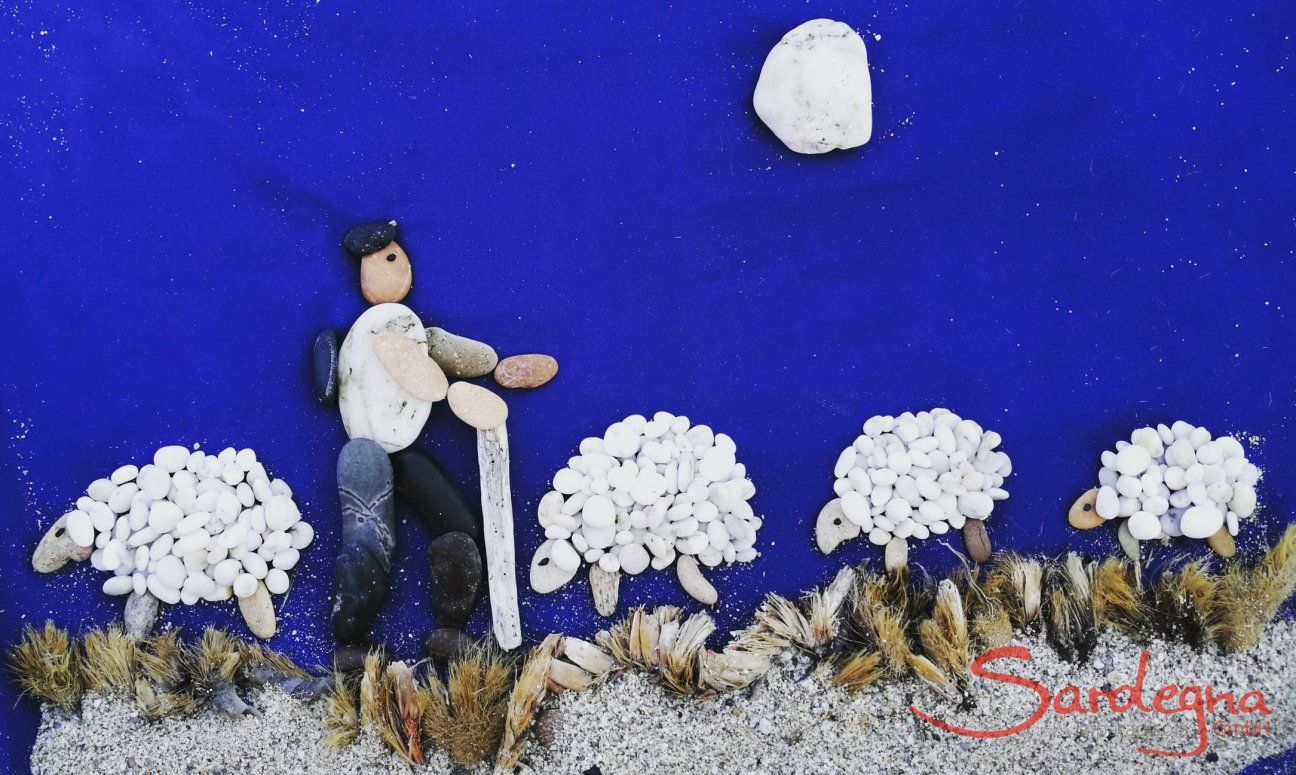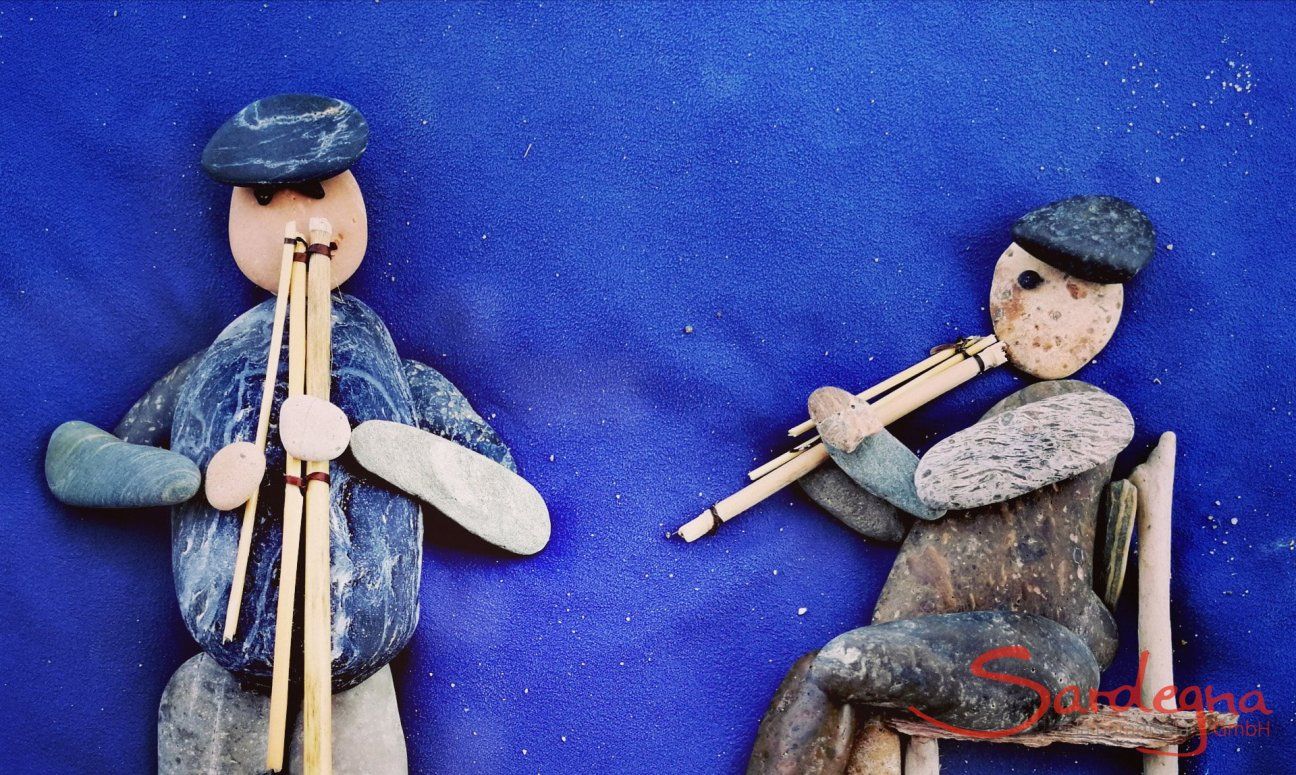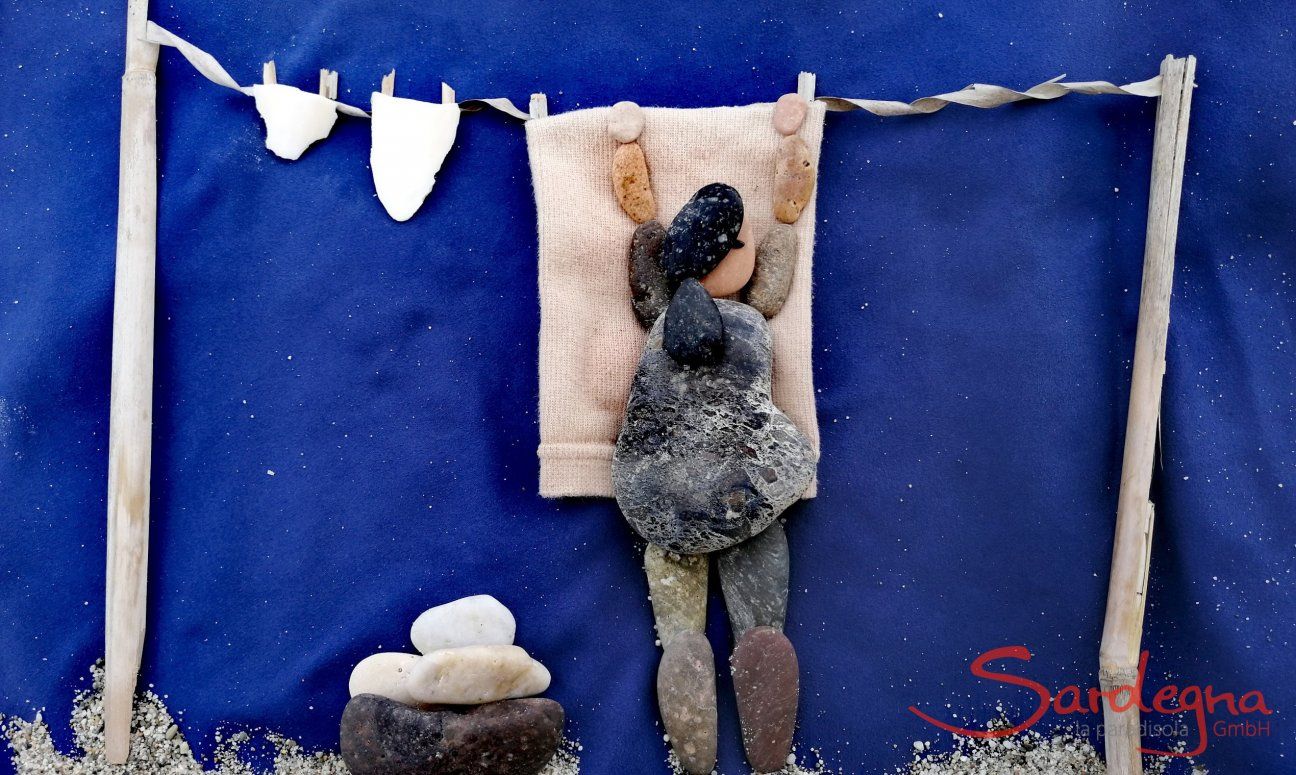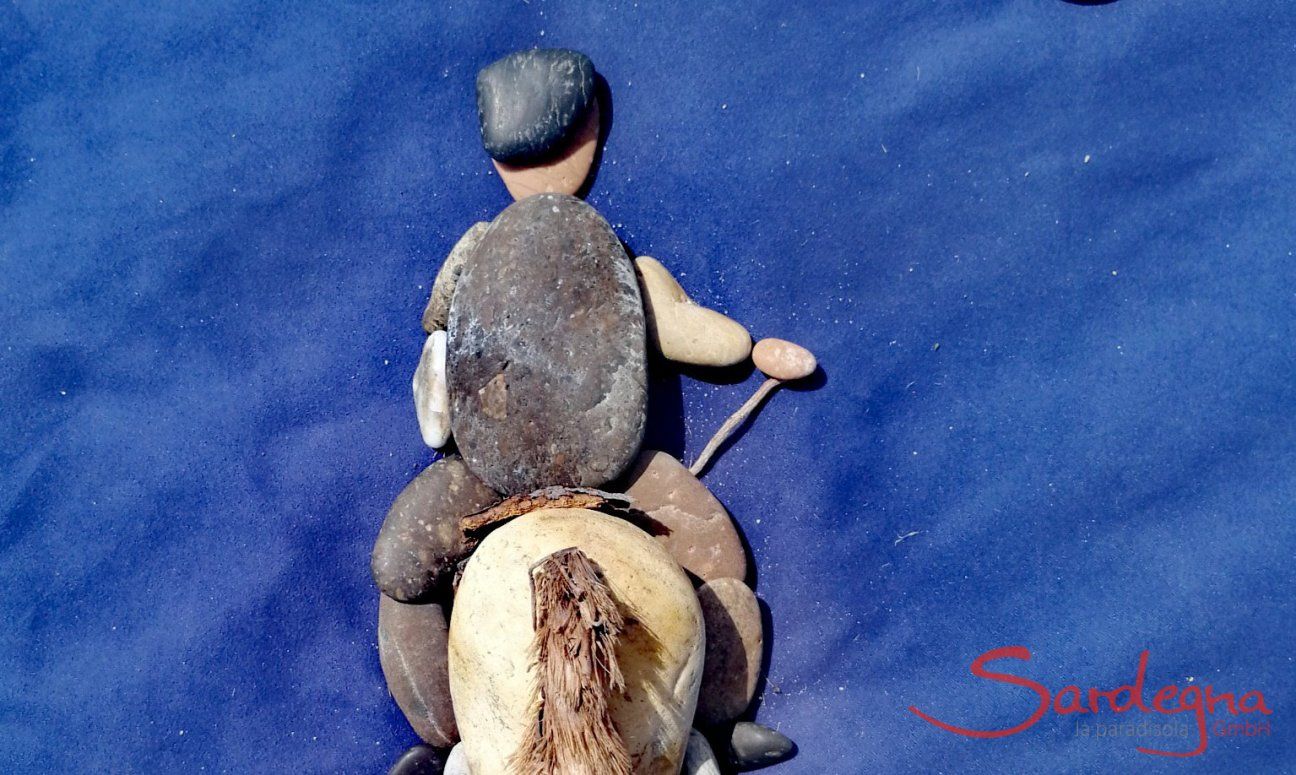
Pebble art by the sea
Details
She has two masterpieces: photo books titled 'The Stones of Murtas'. She pebbles are from the east coast of Sardinia: stones and tiny pebbles lying on the beach in many colours and shapes, polished by the sea over thousands of years or only very recently. The artist is Debora Spanu - a brilliantly creative beach fine artist. The mother of two children, 8 and 13, lives in San Vito, a small village in Sarrabus. As often as she can, Debora goes to the seaside, collects stones on the beach and arranges them into highly original pictures. With typical Sardinian passion, she creates compositions using round, rectangular, small, large, black or reddish stones. She develops her motifs on a cloth, photographs them, and then - a true ecologist - she returns the pebbles to the beach and the sea.
Seeing is believing. You will find a woman carrying a basket of asphodel on her head walking down the street and men playing launeddas, river reeds played like a flute. Debora transforms sand and pebbles into a shepherd resting in the countryside, a housewife in front of the oven baking carasau bread and pistoccu, and a little animal such as a hedgehog, a cat, a turtle, and many birds. In one of her books, Debora glorifies motherhood by recounting the mystery of life using sand and pebbles: a pregnant woman, an infant in a cradle. And then she depicts the splendours of the traditional Sardinian countryside, an outdoor museum of the Mediterranean maquis: prickly cactus fruits picked with wooden sticks. Debora's work encompasses the lives of intellectuals, fishermen and farmers: a student with a book, a fisherman with a fishing rod. There are images of rural life such as sheep shearing or milking. Asked how one becomes an artist, Debora says: "Art is born when hands, head and heart go together. It may seem like a game." Yet it is not a game - it is art.
(Text from Italian by Giacomo Mameli)
